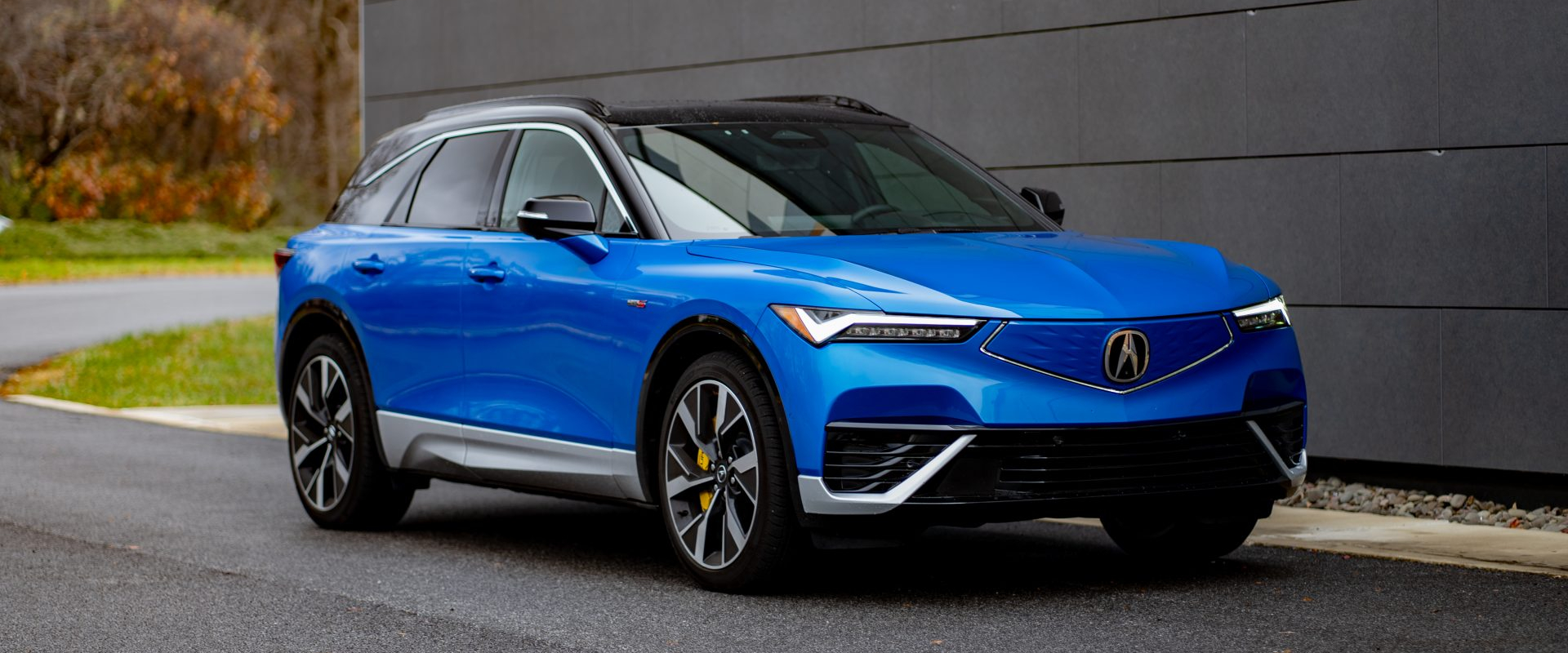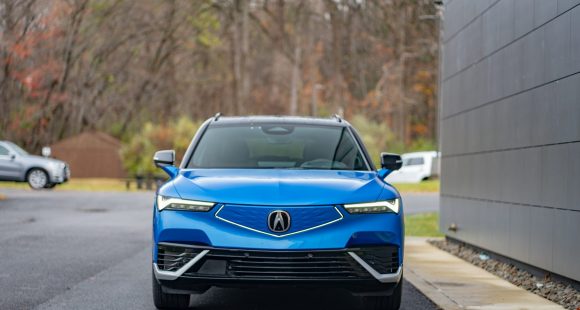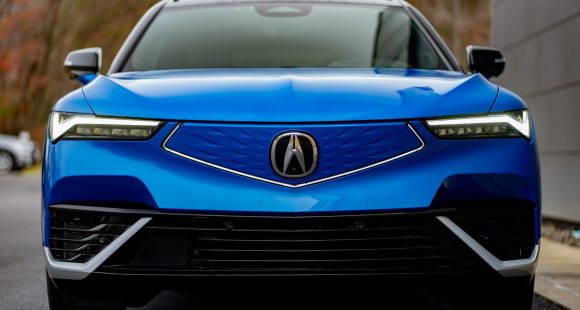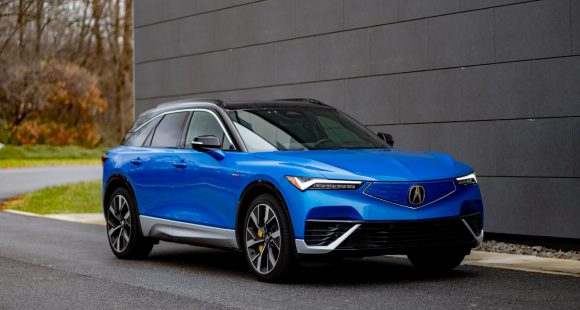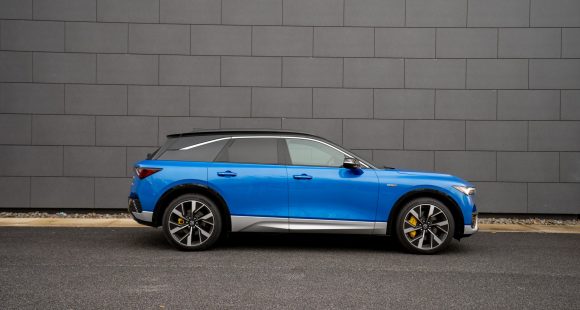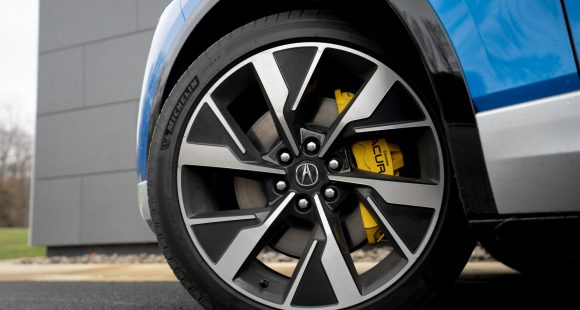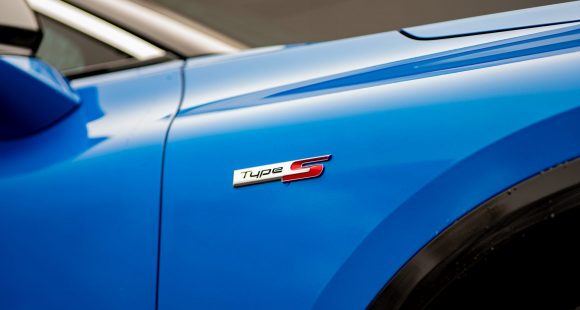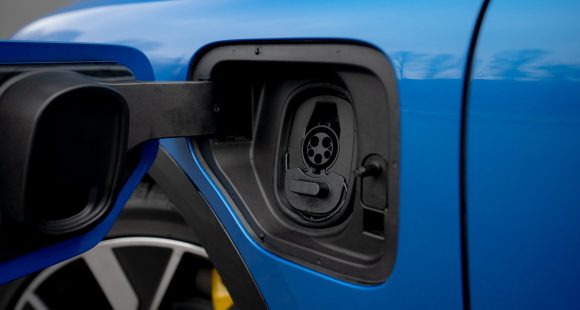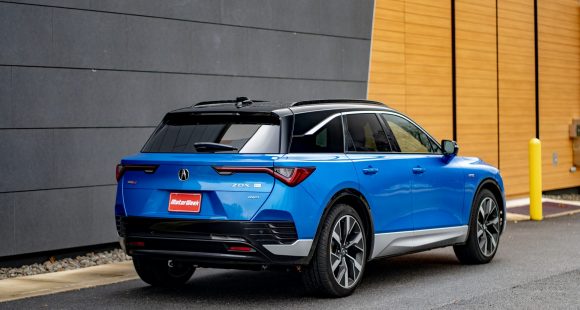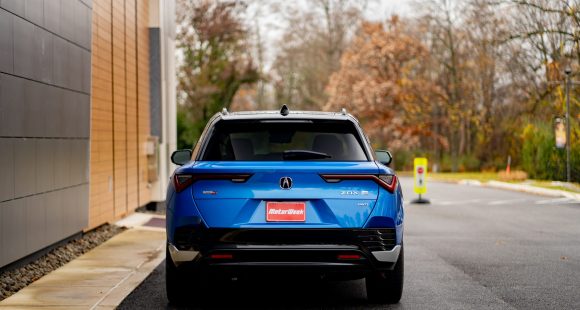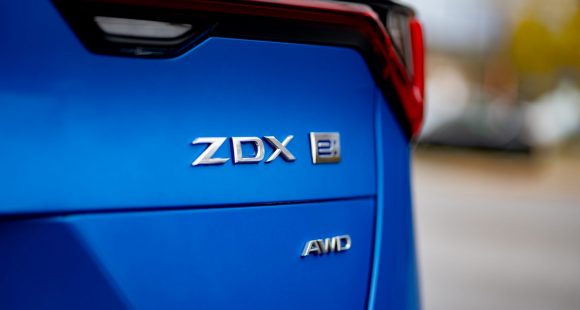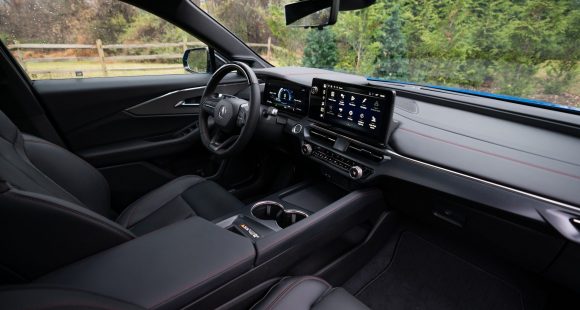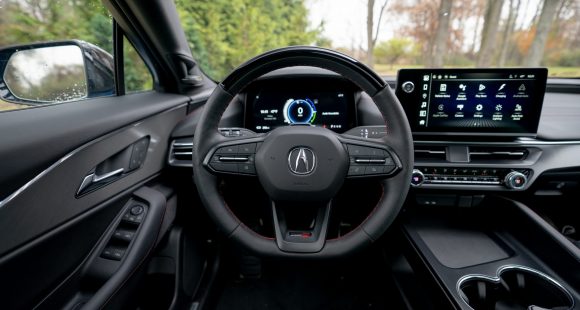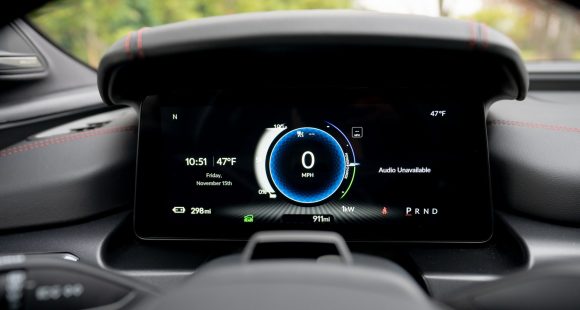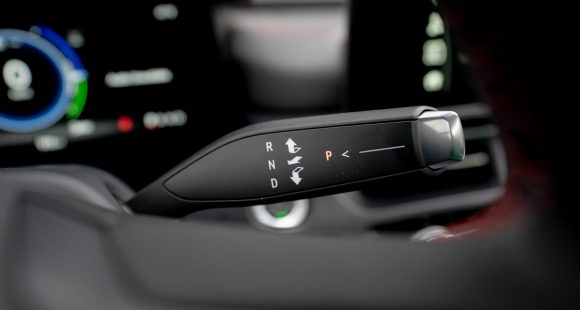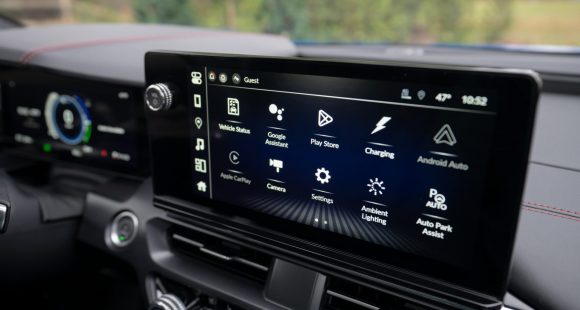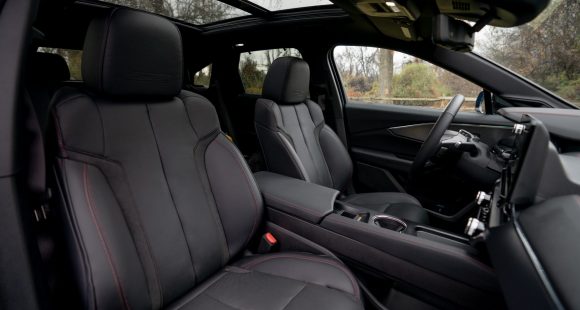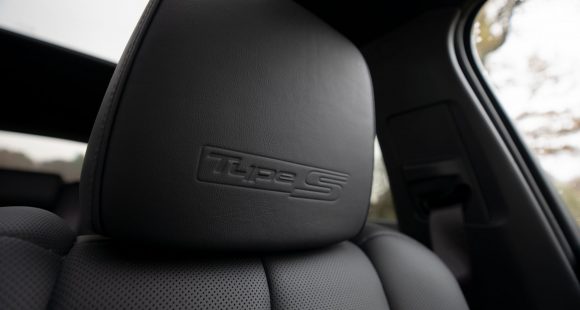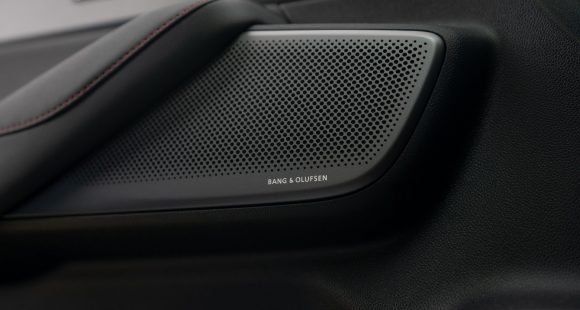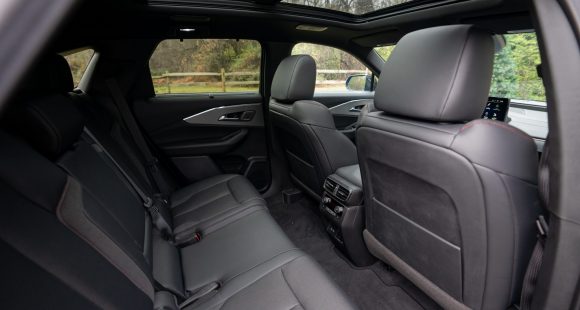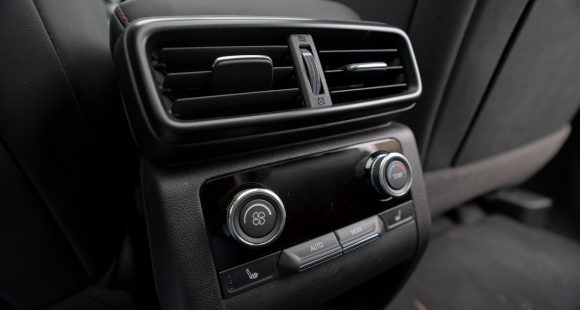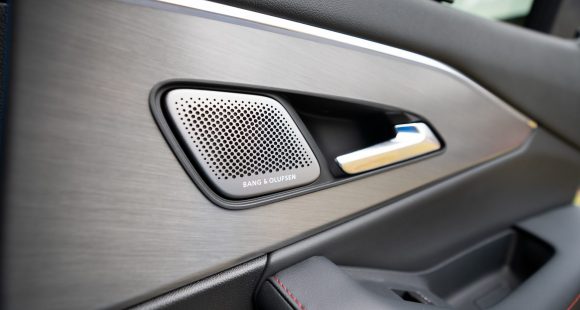2016 Cadillac CTS-V
No matter where your car company hails from, if you build a sport sedan, you’ll ultimately get compared to the companies that have done it the best, for the longest time: The Germans! BMW, Mercedes, and VW/Audi. Whether that’s fair or not, is a topic for another day. Because right now, we’ve got a home grown contender to put through its paces, the Cadillac CTS-V!
American carmakers have been trying to catch up, and one-up the German sport sedan concept for over half a century. Numerous times critics, including us, thought they got close. But, it took the 21st century Cadillac brand to really close the gap, with the 2016 CTS-V aiming to fill it for good.
The CTS-V is the original V “for Velocity” of course, but just about everything that makes it go fast now, comes from the Chevrolet Corvette; making this essentially a four-door Corvette with a nicer interior.
That kinship start naturally enough under the hood with the Z06’s glorious 6.2-liter chunk of supercharged aluminum with pushrods, producing 640-horsepower and 630 lb-ft. of torque. The M5 and E63 AMG don’t even come close.
This thing is clearly not some mild-mannered pretender. Just hearing it rumble at startup will put fear into you; floor it and its “oh my gosh” awesome power!
 It is still built on the ATS platform, but significant structural bracing had to take place; and like some of us around here, has stiffer joints all around. Oh yeah, it’s race car rigid.
It is still built on the ATS platform, but significant structural bracing had to take place; and like some of us around here, has stiffer joints all around. Oh yeah, it’s race car rigid.
Just as in some front-wheel-drive transaxles that feature unequal half-shafts to prevent torque steer; a similar arrangement in the CTS-V’s rear, works to quell axle hopping on hard acceleration. The results are, according to the factory, a blistering 3.7-seconds to 60.
There are Brembo brakes obviously; and topping it off, GM stuffed as much rubber into the wheel wells as possible; 265/35/19 Michelin Pilot Super Sports in front, 295/30/19s in back.
We’ve said it many times before about V-Series cars; you really need to get them on a race track for full affect. Tooling to the winery on the weekend or even slicing up your local back roads in this CTS-V does not reveal the true story of how competent it is.
So we jumped at the change to try it out a Road America! Yep, this Caddy is one awesome track machine. Between Performance Traction Management and the power distributing electronic limited-slip differential, you have no trouble getting all 640 horses to the pavement with little concern about being out of control.
 More power than the Germans, and better use of it than hotrods like Hellcats and Shelby’s. And that very linear power delivery also works well with the 8-speed automatic transmission that comes with all CTS-Vs.
More power than the Germans, and better use of it than hotrods like Hellcats and Shelby’s. And that very linear power delivery also works well with the 8-speed automatic transmission that comes with all CTS-Vs.
There’s plenty of mid-range muscle coming out of turns; with minimal weight transfer thanks to Magnetic Ride Control, even with a hefty 4,145-lbs. to manage. Brakes are all day long durable.
Driven hard it seems to move around on you a little, but it seems to catch itself and never get out of shape. You know there’s electronic intervention happening, but you still feel in total control.
There’s a more aggressive look to go along with all of that performance. Virtually every body panel is unique and purposefully designed to maximize downforce, minimize lift, or enhance cooling.
The air-extracting hood is made of carbon fiber as are the front splitter, rear diffuser, and spoiler if you opt for the carbon fiber package.
 As for the interior, thankfully it does not appear like it was done on a shoestring budget; just an enhanced performance feel thanks to sueded materials, performance seats, Head Up display, and of course the Corvettes’ Performance Data Recorder.
As for the interior, thankfully it does not appear like it was done on a shoestring budget; just an enhanced performance feel thanks to sueded materials, performance seats, Head Up display, and of course the Corvettes’ Performance Data Recorder.
And perhaps most important of all, it doesn’t feel any less Cadillac when you’re driving sanely.
Government Fuel Economy Ratings are 14-City, 21-Highway, and 17-Combined. So there is a gas guzzler tax.
Base price is $85,990. And if that’s too much, don’t forget that this big V has a little brother ATS-V which packs almost as much performance for $61,460.
Now, we know that many sport sedan aficionados will never be convinced that a four-door designed anywhere but Germany is worth a second look. But, if you have an open mind, then you’ll see where we’re coming from when we say that hands down, the 2016 Cadillac CTS-V beats all comers in the traditional European sport sedan category in every way! And we’re just ecstatic to be along for the ride.
Specifications
- Engine: 6.2 liter
- Horsepower: 640
- Torque: 630 lb-ft.
- 0-60 mph: 3.7 seconds
- EPA: 14 mpg city / 21 mpg highway
2024 Acura ZDX
Acura Gets To EVTown With A Little Help From Its Friends
This Acura ZDX may look just like every other Acura, but that’s far from the case. This is actually the brand’s first all-electric vehicle. And that’s just the tip of this electronic iceberg, as there’s plenty more to discover beneath the surface. So, join us for a deep dive into some unchartered waters.
The Acura ZDX is the brand’s first full battery-electric vehicle, and Acura took a long and winding road to get here. It started off in Detroit where GM’s Ultium platform was born. Honda struck a deal to make use of it for their Prologue SUV and developed this Acurafied version right along with it. Base A Spec comes standard with a single 358-horsepower rear motor, or you can step up to a dual-motor all-wheel-drive setup with 490 horsepower. This Type S cranks up the horsepower a bit to 499 but more impressively winds up an additional 107 lb-ft of torque for a total of 544; that’s 52 lb-ft more than the last NSX supercar.
All versions share the same 102-kWh battery, meaning a max range of 313 miles in the A-Spec. That drops to 278 here in our Type S tester, though in our driving loop, we were on pace for 295 miles. 190-kW max fast charging feeds enough juice to get you to 80% charge in 42 minutes. And using 43-kWh of electricity per 100 miles, the Type S earns a fair efficiency rating. Regen braking may not have as many levels of adjustment as some EVS, but full one-pedal driving is available, along with a regen-on-demand brake paddle on the back of the steering wheel.
The Type S gets a host of additional upgrades dedicated to improving performance: bigger stabilizer bars front and rear, quicker steering ratios, 22-inch wheels, and an adaptive air suspension that keep the ride pleasant even with those 22s. Summer tires are also available.
Not sure if it speaks to the Acura’s overall refinement, or if we’re just getting used to launching crazy fast EVs, but the ZDX didn’t feel particularly strong off the line, yet when we looked at the numbers, we were racing to 60 in just 4.5-seconds. No drop off in power though the ¼-mile. ZDX is consistent and fast; silently streaking to the end of the track in 12.9-seconds at 110 miles-per-hour. As with all EVs, there’s substantial weight to deal with, here about 3-tons, but its distributed equally front to back, and it felt extremely smooth through our handling course. The very light steering and aggressive stability control took some getting used to, but after a few runs we were able to find a good pace that kept everything happy, including us as there was very little body roll in the ZDX.
It felt extremely smooth through our handling course.
Type S gets Brembo brakes up front, and in our panic braking runs, there was a very aggressive initial bite, and despite the weight, brought things to a quick stop in a short 102-feet from 60 miles-per-hour.
Inside, a sharp-looking digital instrument cluster is joined by an 11.3-inch color touchscreen display, small by today’s standards, but well integrated, and with Google built in, operation is very familiar.
All ZDXs come with Perforated Milano leather seating. Type S upgrades with Microsuede inserts. It also adds a unique steering wheel, brushed aluminum trim, lots of logos, and it is the first Acura to get a Bang & Olufsen audio system. Small item storage is plentiful up front, and rear cargo capacity is 28.7 cubic-ft; expanding to 62.0 with the rear seatbacks folded; that’s closer to RDX than MDX. Back seat passengers get a great experience, with plenty of room all around, heated seats, climate controls, and charging for their electronics.
Despite starting off with the GM chassis, Acura designers clearly crafted a vehicle that looks every bit an Acura. It’s long, low, and wide with a modernized take on Acura’s shield grille leading the way.
A-Spec pricing starts at $65,850, Type S goes for $74,850; both versions are currently still available for full federal tax credits.
You may remember a first Acura ZDX, a coupe-style SUV that came and went in the early 2010s. This is not that ZDX, but it’s certainly just as forward thinking; better timed and much better looking too.
The Acura ZDX is a very well executed first step into the world of electrification. And we have no problems with them getting a little help from GM to get things started, as the Ultium platform has spawned some fantastic EVs. But, at the same time, we do look forward to what Acura’s next and perhaps far more important step will be.
Specifications
As Tested
- Motor Setup: Dual Motor
- Battery Size: 102-kWh
- Horsepower: 499
- Torque: 544 lb-ft
- EPA Range: 278 miles
- 0-60 mph: 4.5-seconds
- 1/4 Mile: 12.9-seconds at 110 mph
- Braking, 60-0 (avg): 102-feet
- MW Test Loop: ~ 295 miles
- Peak Charging : 190-kW







